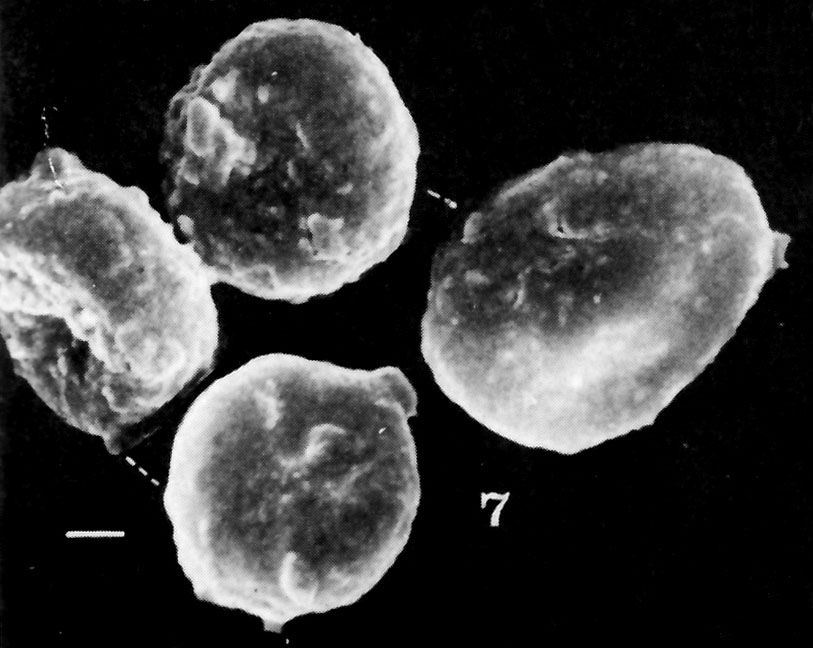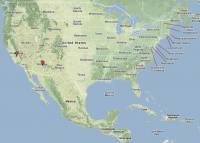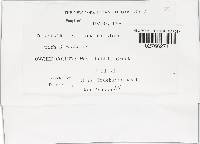
|
|
|
|
Family: Agaricaceae
|
Wright J.E. 1987. Bibliotheca Mycologia 113: 142. Tulostoma mohavei Lloyd (Fig. 99; Pls. I: 7;XLV:5) - Mycological Writings 6: 992, fig. 1777. 1920. Etym.: The name refers to its having been found in the Mojave Desert, California, U.S.A. Spore-sac up to 15 mm diam. Exoperidium hyphal, mixed with sand grains. Endoperidium white, almost smooth, with a few scars from sand grains. Mouth tubular, large, plane, with or without a lip. Socket conspicuous, either much adhered to the stem or fairly separated from it, with a membrane covered by sand. Gleba ochraceous ferrugineous, much lighter than in T. volvulatum. Stem obese, in one of the holotype specimens tapering downwards; in genera attenuated towards the base, concolorous, rugose to substriate, up to 30 x 7 mm. Spores globose, appearing dark yellowish, some ochraceous and smooth under L.M.; some elliptic, apiculate, with a thick episporium, (4)-4.7-5.9 µm diam. Under SEM they appear either totally smooth or very sparsely and minutely asperulate. Capillitium hyaline to almost, branched and septate; threads thin-walled with a visible to lacunar lumen, some wavy; septa uncoloured, numerous, disjointable with blunt ends; 4-8.1 µm diam, but may reach 8.5 um. Habitat: sandy soil in desertic areas. Distribution: Asia; North America: United States; South America: Argentina. Holotype: United States, California, San Bernardino Co., Mojave Desert, Blythe Junction, leg. Munz, 2.IV.1920 (Herb. Lloyd n° 13.637, BPI!). Illustration: Lloyd (op.cit.). |








































